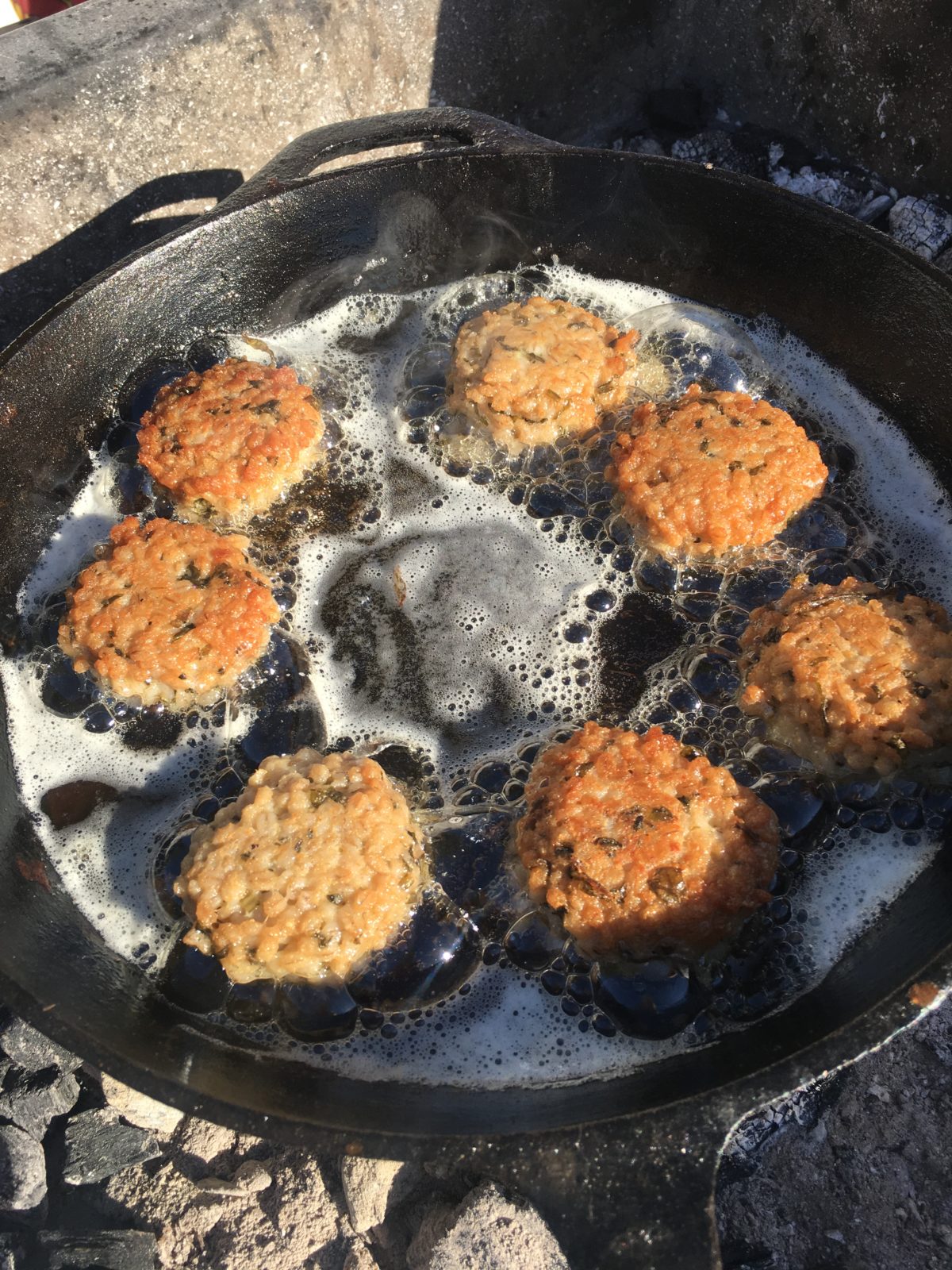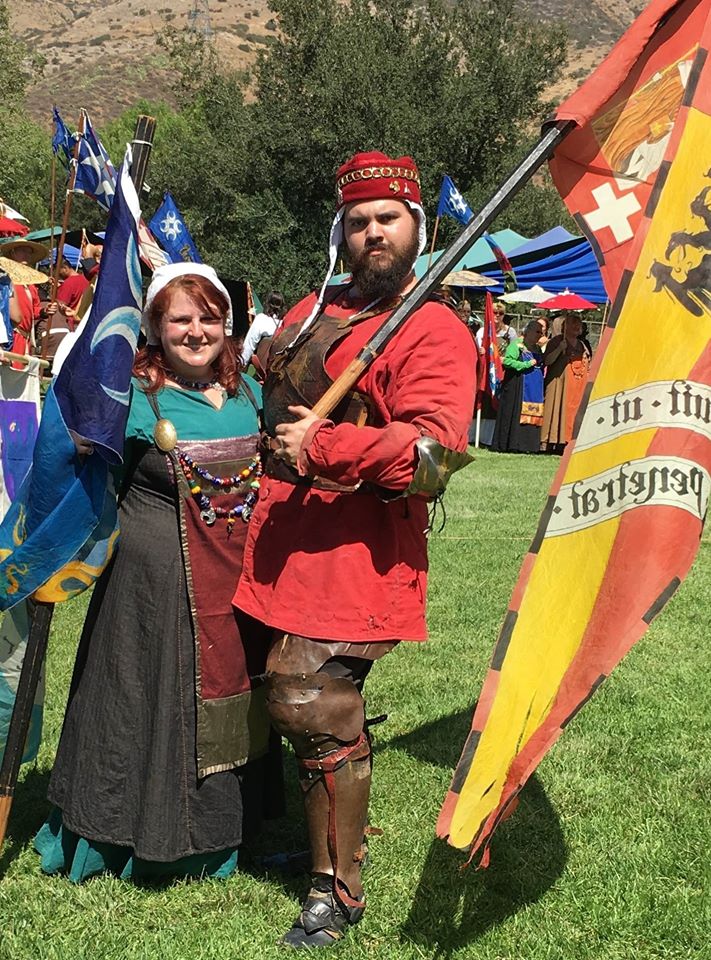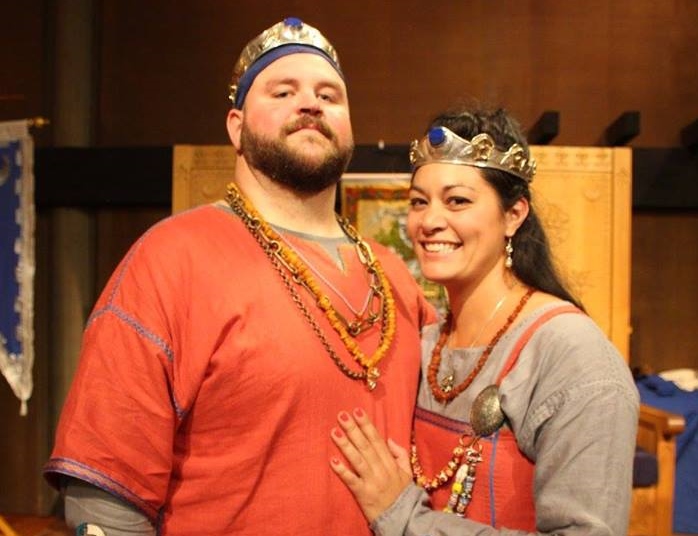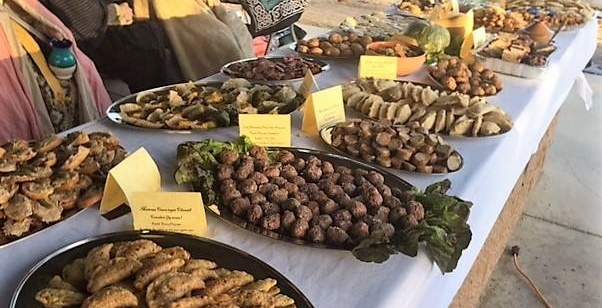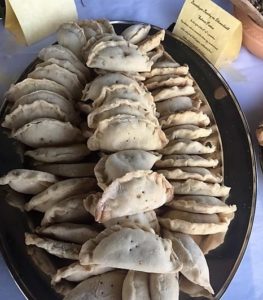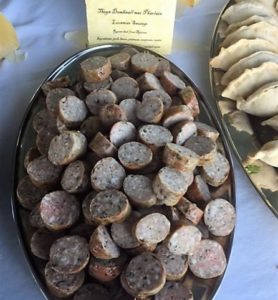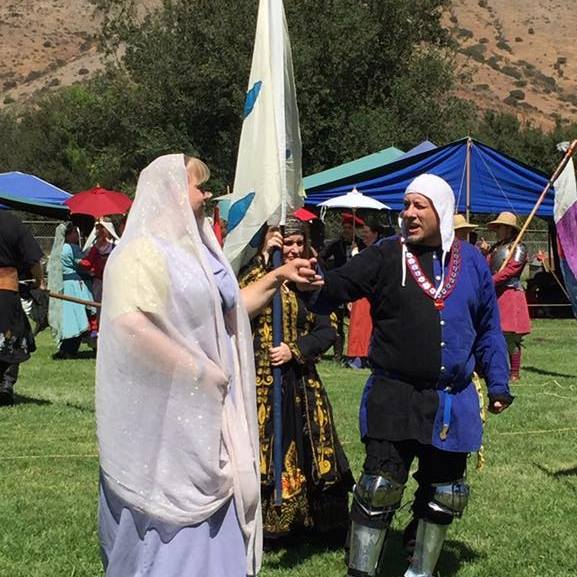Haggis is a traditional Scottish savoury pudding containing sheep’s pluck (heart, liver, and lungs), minced with onion, oatmeal, suet, spices, and salt, mixed with stock, and traditionally encased in the animal’s stomach. It actually has an excellent nutty texture and delicious, savory flavor.
While the exact origin of haggis is not clear, haggis-type dishes have been described since ancient history. Toward the end of the 8th century BCE, a kind of primitive haggis is referred to in Homer’s Odyssey, when Odysseus is compared to “a man before a great blazing fire turning swiftly this way and that a stomach full of fat and blood very eager to have it roasted quickly.” The soldiers of ancient Rome ate a version made of pig offal, “enclosed in the clean caul (the membrane surrounding the intestines) of a pig.”
Many scholars look to the word haggis, itself, to explain its origin. The ‘Auld Alliance’ between the kingdoms of Scotland and France, formed in 1294, suggest to some, including an icon of Scottish literature, Sir Walter Raleigh, that haggis has French origins, and comes from the French word hachis (meaning minced meat). There is great evidence that haggis arrived in Scotland from Scandinavia, even before Scotland was a single nation. Etymologists suggest that that the hag– element of the word is derived from the Old Norse haggw or the Old Icelandic hoggva , meaning ‘to hew’ or strike with a sharp weapon, relating to the chopped-up contents of the dish. And, although the name hagws or hagese was first recorded in England c. 1430, the dish is considered traditionally to be of Scottish origin.
Where the dish of haggis truly originated is a seemingly moot point, as there appears to have been a version of haggis created in every ancient culture. Nothing on the animal could be wasted. When an animal was killed, the offal had to be eaten at once, or preserved in some way. Haggis appears to be invented as a way of cooking quick-spoiling offal near the site of a hunt, without the need to carry along an additional cooking vessel. The liver and kidneys could be grilled directly over a fire, but this treatment was unsuitable for the stomach, intestines, or lungs. Chopping up the lungs and stuffing the stomach or bladder with them and whatever fillers might have been on hand, then boiling it (probably in a vessel made from the animal’s hide), was one way to make sure these parts were not wasted. The cooked offal could now be transported to eat later, as well. By being salted, packed into a stomach and boiled, the offal would keep for a couple of weeks.
Why the Scots continued to stuff sheep stomachs, while the rest of the world moved on to sausages using intestinal casings, remains one of the mysteries of history. The Scots did used intestinal casings for sausages, as well, but the haggis remained encased in a sheep stomach, for centuries, as a traditional Scottish food.
The Form of Cury (cookery), written in 1390 by one of the cooks to King Richard II, contains a recipe for a dish called Afronchemoyle, which is in effect a haggis:
“Nym eyren wyth al the wyte and myse bred and schepys talwe as get as dyses Grynd pepr and safron and caste thereto and do hit in the schepis wombe Set it wel and dresse it forthe of brode leches thynne.”
[In other words: Take eggs, with the white and the yolk together, and mix with white breadcrumbs and finely diced sheep’s fat. Season with pepper and saffron. Stuff a sheep’s tripe with the mixture, sewing securely. Steam or boil and drain before serving.]
The oldest recipe (around 1430 AD) for “haggis” comes from the appendix of a medieval manuscript of poems on Cookery, ‘LIBER CURE COCORUM’:
For hagese.
Þe hert of schepe, þe nere þou take,
Þo bowel no3t þou shalle forsake,
On þe turbilen made, and boyled wele,
Hacke alle togeder with gode persole,
Isop, saveray, þou schalle take þen,
And suet of schepe take in, I ken,
With powder of peper and egges gode wonne,
And sethe hit wele and serve hit þenne,
Loke hit be saltyd for gode menne.
In wyntur tyme when erbs ben gode,
Take powder of hom I wot in dede,
As saveray, mynt and tyme, fulle gode,
Isope and sauge I wot by þe rode.
For Haggis (translation)
The heart of sheep, the kidneys you take,
The bowel naught you shall forsake,
In the broth made, and boiled well,
Hack all together with good parsley,
Hyssop, savory, you shall take then,
And suet of sheep take in, I teach,
With powder of pepper and eggs good quantity,
And seethe it well and serve it then,
Look it is salted for good men.
In winter time when [dried] herbs are good,
Take powder of them I know indeed,
As savory, mint and thyme, quite good,
Hyssop and sage I know by the Rood.
Optional Ingredients:
Not called for in this recipe but later recipes, such as the ones referenced by Gervais Markham in 1615, below, call for oats to be included, and oats historically would have been used in Haggis recipes before, during and after this recipe in 1430 A.D.
xxv. Hagws of a schepe. (Two 15th century Cookery Books, Thomas Austin)
Take þe Roppis [guts] with þe talour [tallow; fat] & parboyle hem; þan hakke hem smal; grynd pepir, & Safroun, & brede, & yolkys of Eyroun, & Raw kreme or swete Mylke: do al to-gederys, & do in þe grete wombe of þe Schepe, þat is, the mawe; & þan seþe hym wyl, & serue forth.
[In other words: Take the guts with the tallow and parboil them; then chop them small. Grind pepper and saffron and bread, and [add] yolks of eggs and raw cream of fresh milk; put it all together and put in the belly of the sheep, that is, the stomach. Then boil and serve it forth.]
An early printed recipe for haggis appears in 1615 in The English Huswife, by Gervase Markham. It contains a section entitled “Skill in Oate meale”:
“The use and vertues of these two severall kinds of Oate-meales in maintaining the Family, they are so many (according to the many customes of many Nations) that it is almost impossible to recken all;”
Markham then proceeds to give a description of “oat-meale mixed with blood, and the Liver of either Sheepe, Calfe or Swine, maketh that pudding which is called the Haggas or Haggus, of whose goodnesse it is in vaine to boast, because there is hardly to be found a man that doth not affect them.”
In Scotland, we are not lucky enough to have any published cookbooks in our period. But, there is much evidence that haggis was eaten throughout Scotland’s history, as it was elsewhere. The Scottish poem, “Flyting of Dunbar and Kennedy“, which is dated before 1520 (the generally accepted date prior to the death of William Dunbar, one of the composers), refers to ‘haggeis‘:
Thy fowll front had, and he that Bartilmo flaid;
The gallowis gaipis eftir thy graceles gruntill,
As thow wald for ane haggeis, hungry gled.
Fortunately, there are numerous English recipes of the 14th and 15th centuries that describe very clearly a haggis, although they may not be named as such. Of particular interest to me is the reference to recipes that added various embellishments, such as milk or cream, chopped guts, roasted pullets, pork or other meats, cheese, and spices to the stuffing.
The earliest published recipes from Scotland are from the private collection of Lady Castlehill of Glasgow, in 1712. Included in this collection is a recipe for haggis pudding:
To make a Haggas Pudding.
Take the lights, heart and kidneys of a lamb or sheep but not the liver; boile them, and pick them, and pick out the strings: then shred them small with good store of Beef Suet mingled with Currans, Nutemeg, and Salt, grated Bread & Sweet Herbs shred small: the yolks of 3 Eggs and 4 spoonfulls of Cream: stirre them together and put them into the Paunch of a Sheep, scowred & cleansed and seasoned for 3 dayes befor: Let it boile 4 houres: serve it in the Paunch; give it a gash carelesly, then it will rune out green.
I very much wanted to include a haggis as a part of my Scottish cuisine for Caid’s 40 Year Celebration, but I realized a haggis “pudding” (sausage) would be much greater received by the populace. I based my recipe on Lady Castlehill’s “haggas pudding“, but took a cue from other recipes that included oats and other meat bits, to make the sausage more affordable.
My ultimate recipe included lamb heart and kidneys, as well as a bit of lamb and beef chuck, currants,oats and fresh cream. I spiced the mixture with a combination of dried and fresh herbs, including sage, parsley and thyme.
It must have been delicious, because it was gone before I had a chance to eat any myself. I will definitely be making this again!
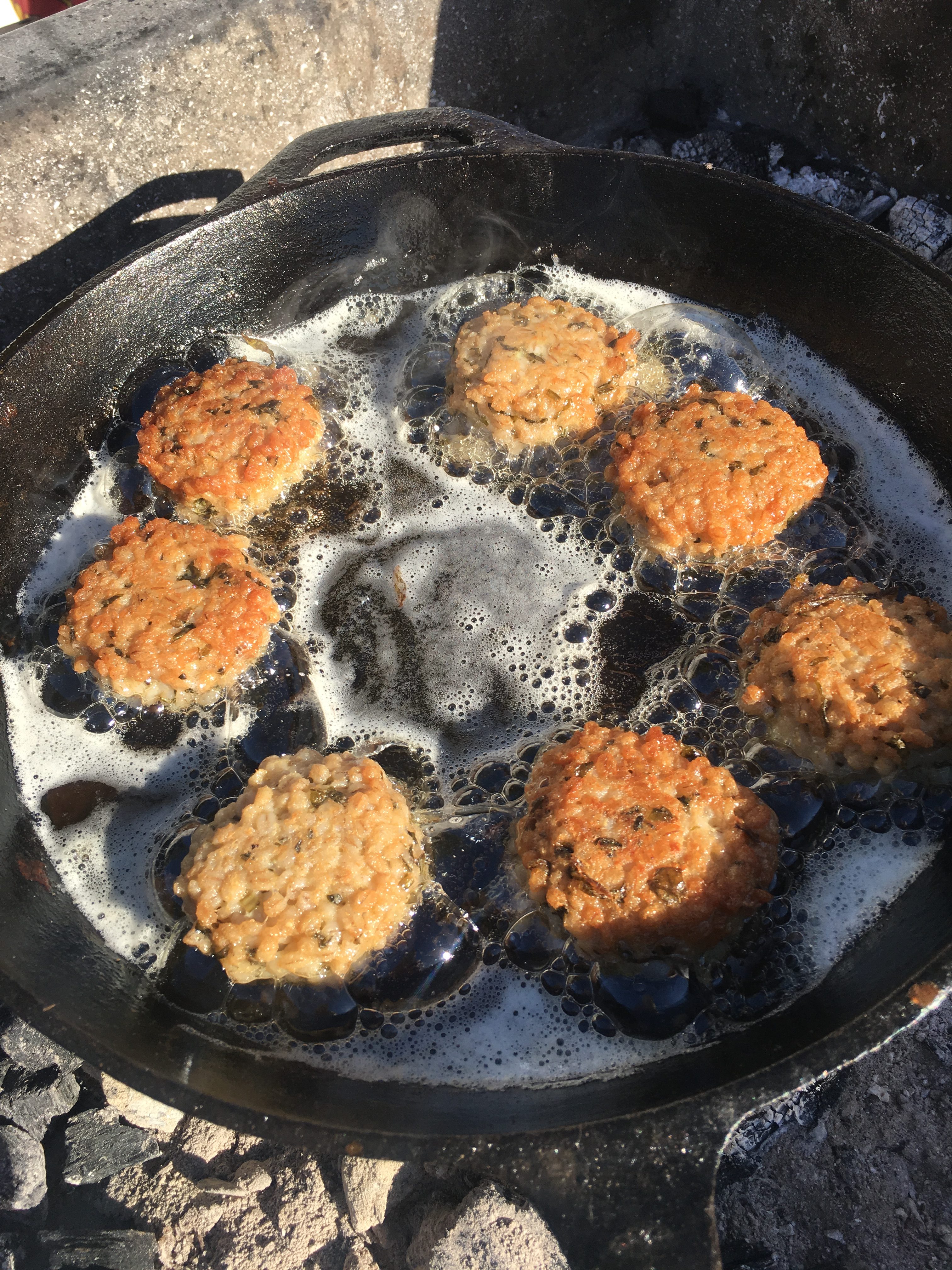 By the end of the winter, most meals probably seemed rather meager and dreary. Most of the stored food had probably been used up and pottage, if it was available, was probably pretty plain, especially for the poor. The first greens to appear in the Spring must have been a most welcome sight, for they added flavor, once again, to the stew pot!
By the end of the winter, most meals probably seemed rather meager and dreary. Most of the stored food had probably been used up and pottage, if it was available, was probably pretty plain, especially for the poor. The first greens to appear in the Spring must have been a most welcome sight, for they added flavor, once again, to the stew pot!
